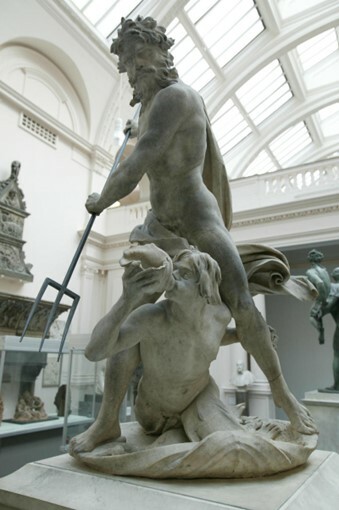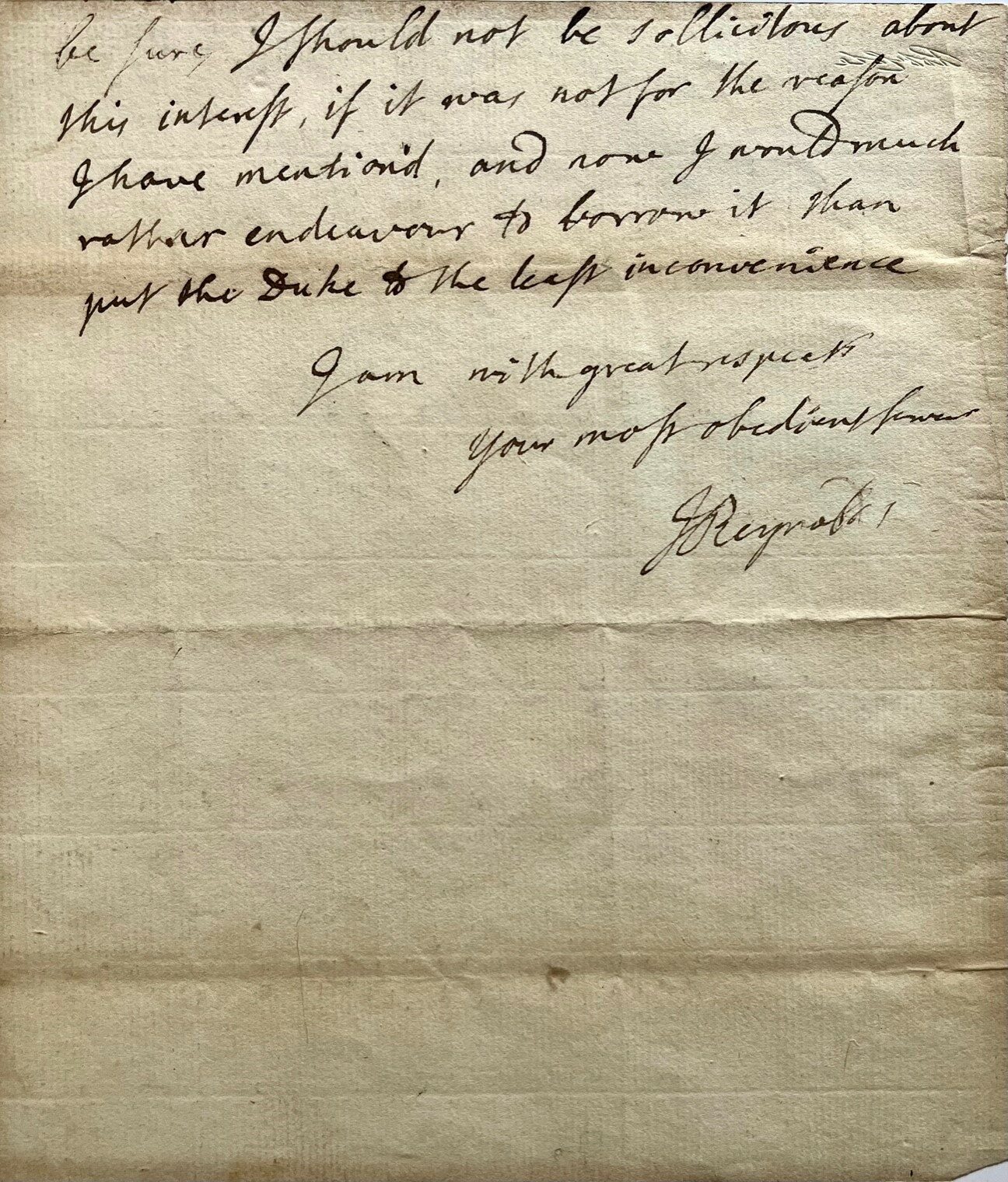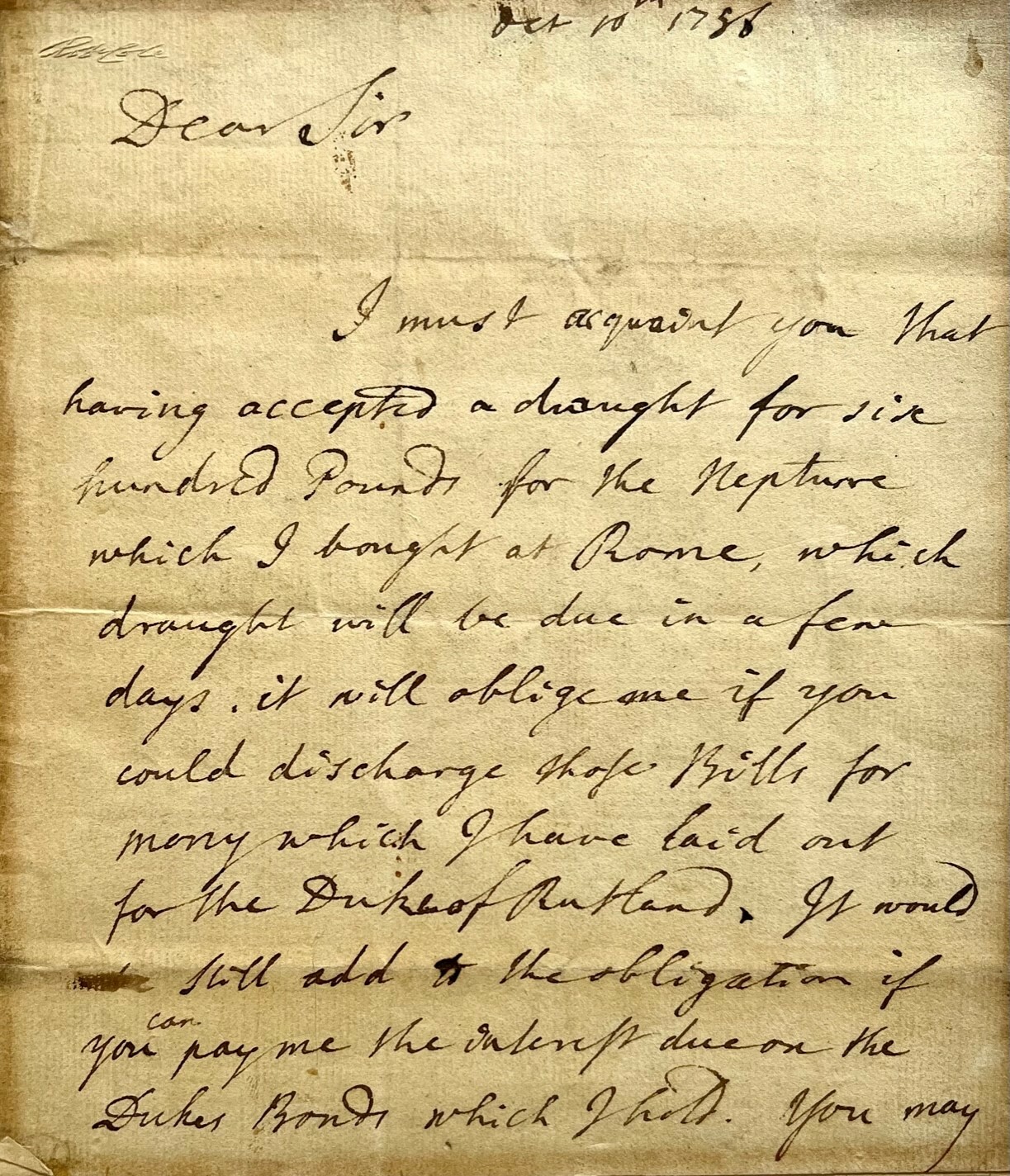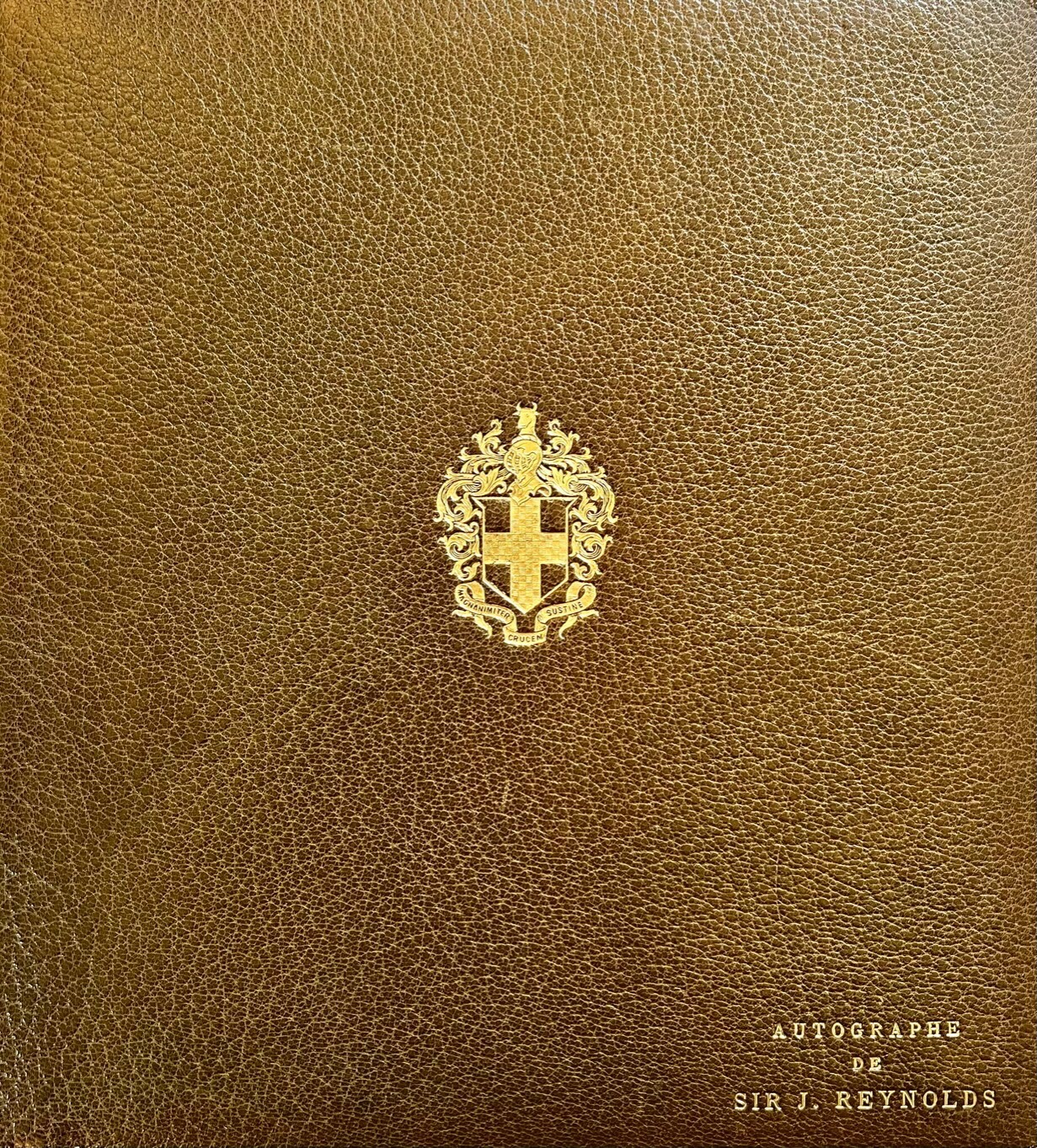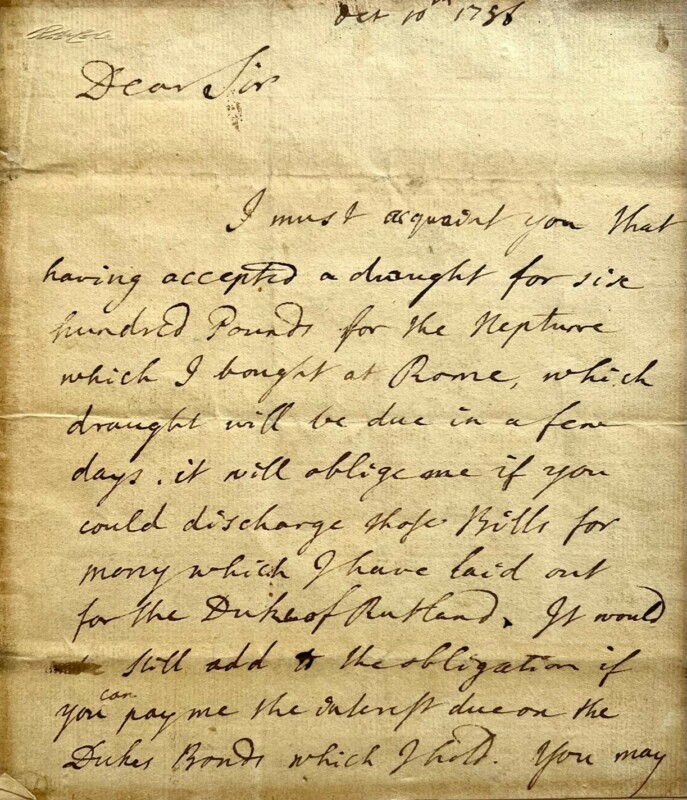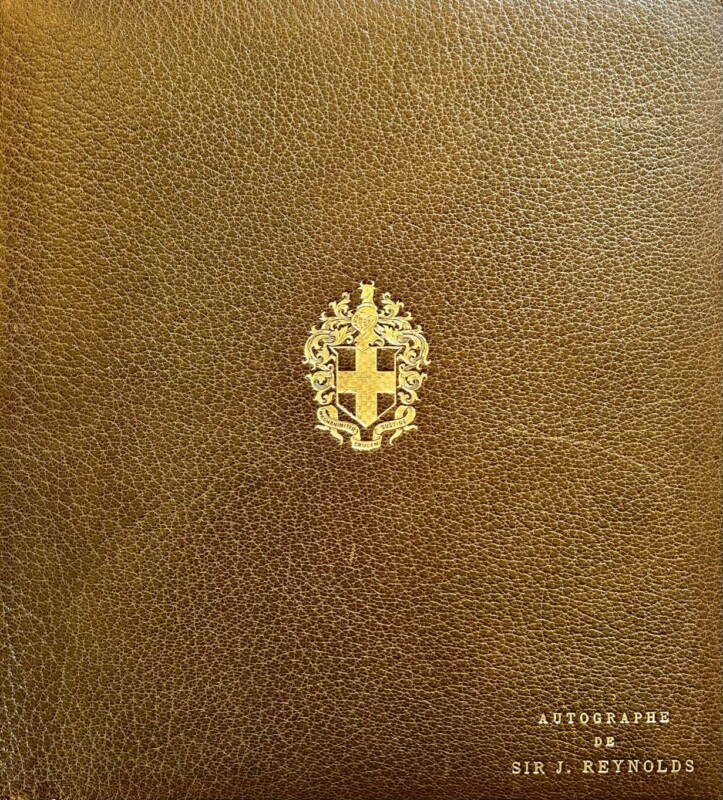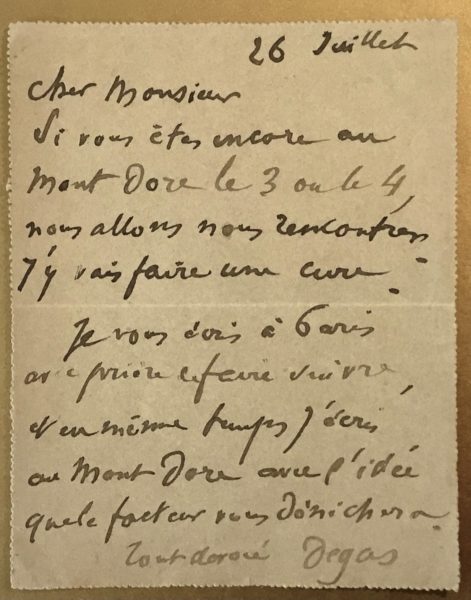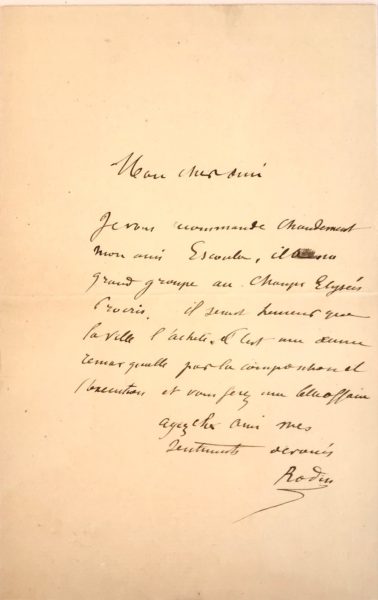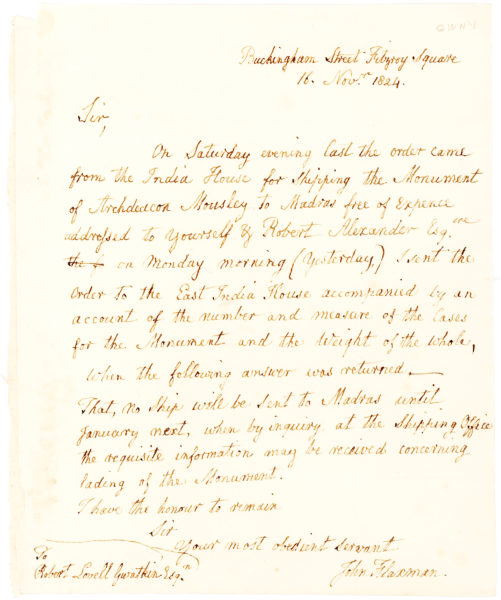Influenced by the Old Masters and his travels on the Continent, Reynolds became a prolific portraitist and Britain’s leading artist of the 18th century. He was a founding member and, until his death, the first president of the Royal Academy of Arts. Reynolds “was widely respected for his intellectual ideas and his emphasis on education, a focus that was apparent through his lecture series ‘Discourses on Art,’” delivered at the Royal Academy, (“Joshua Reynolds Artist Overview and Analysis,” theArtStory.org, https://www.theartstory.org/artist/reynolds-joshua/). In 1769, Reynolds became only the second artist to receive a knighthood. His portraits included actors, courtesans and countless members of British society including Charles Manners, 4th Duke of Rutland (1754-1787), mentioned in our letter, and his wife, a prominent society host whose portrait Reynolds painted no less than four times.
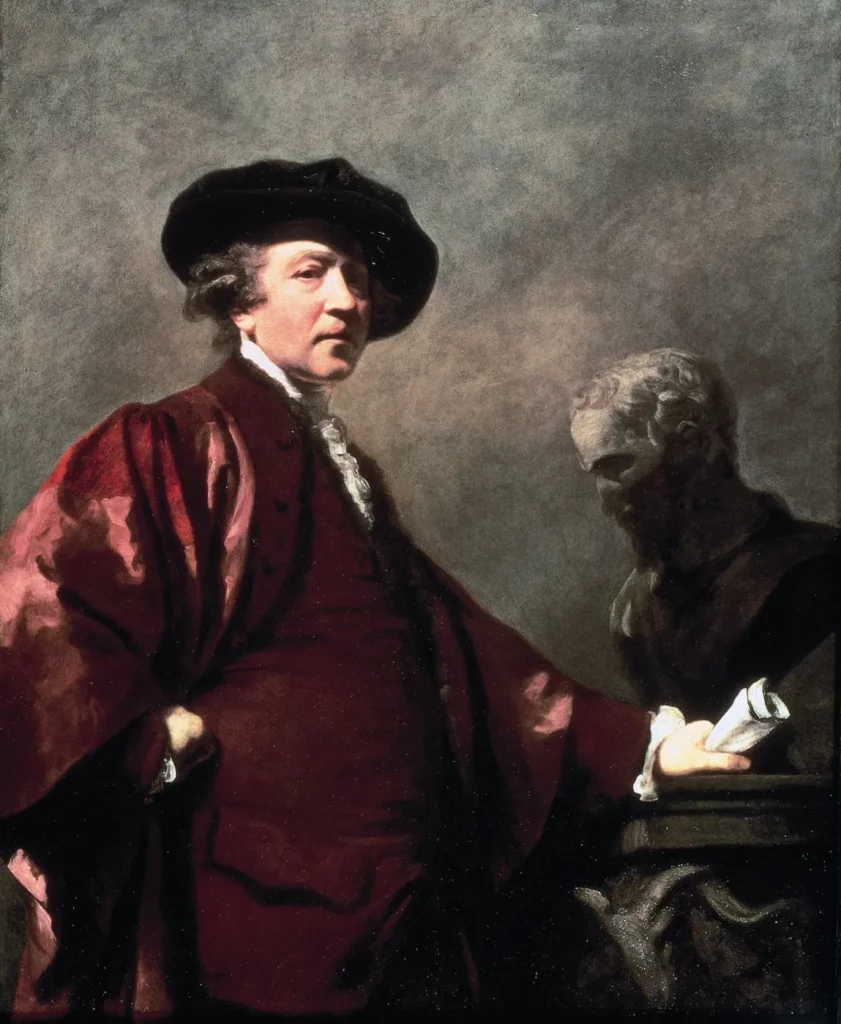
Sir Joshua Reynolds Self Portrait
As was customary at the time, when Reynolds was in Rome in 1786, he supplemented his income by purchasing art for resale, and acquiring works on behalf of Rutland, who was adding to the art collection amassed by his father at Belvoir Castle in Leicestershire. At the same time, Reynolds purchased on speculation Renaissance sculptor Gian Lorenzo Bernini’s Neptune and Triton, formerly installed at Rome’s Villa Negroni and sold by Thomas Jenkins, an English art dealer living in the city. Interestingly, Reynolds had expressed his dislike of Bernini’s sculpture, a plaster cast of which was in the Royal Academy, in his Tenth Discourse, delivered at the Academy in 1780. However, after the sculpture was purchased and exhibited in London, he found his choice impugned by the Morning Herald and Reynolds compiled notes to defend the work. He was unable to sell the sculpture at his price – 1500 guineas – during his lifetime, leaving his heirs to dispose of it for £500 to Charles Pelham, 1st Earl of Yarborough. It remained in the Yarborough family until the Victoria and Albert Museum purchased it in 1950.
In addition to representing Rutland’s interests in London, Joseph Hill, our letter’s likely recipient, was secretary to Lord Thurlow and a friend of poet William Cowper.
Published in Letters of Sir Joshua Reynolds, edited by Frederick Whiley Hilles and The Letters of Sir Joshua Reynolds, edited by Ingamells and Edgcumbe. A blind stamp in the letter’s upper left corner indicates that it belonged to Robert Cole, a fellow of the Society of Antiquaries, whose autograph collection was sold in 1861. Contained within a brown leather folder (9” x 10”) fashioned by bookbinder Leon Gruel (1840-1923) with “Autographe de Sir J. Reynolds” stamped in gold in the lower right corner and with the gold embossed crest of philanthropist, Francophile and book collector Grace Whitney Hoff (1862-1938), the wife of John J, Hoff, a Standard Oil executive. Hoff’s French home, Chateau de Peyrieu, was home to a vast collection of rare books: “Several ancient vitrines which stand along the hall enclose hundreds of rare editions and old armorial bindings, including those of the fifteenth century with chains, alongside those of the Renaissance, among which are several of very rare origin, such as those that belonged to Francis I, Henry II, Henry III, Henry IV, or to the celebrated collectors Grolier, Maiolo, or Canevarius… Napoleon I and the Empress Josephine…Eminent students, connoisseurs of the book treasures of the world, have made an illustrated catalogue of this unique collection, which Monsieur Paul Gruel [maker of the Reynolds’ leather binder], of Paris, considers one of the most important private collections in existence,” (Grace Whitney Hoff, The Story of an Abundant Life, Patch. Riverside Press, 1933.)
Thin strip of mounting paper on the right side of the detached, integral leaf’s verso. Slightly age-toned and soiled. In very good condition. A rare letter with an important and impeccable provenance.
